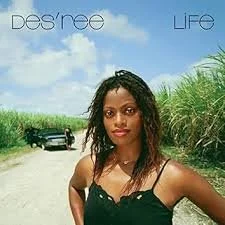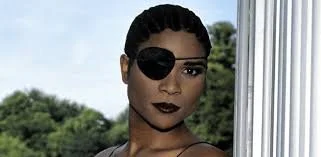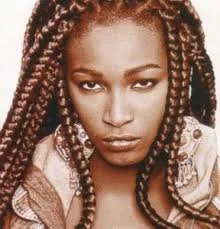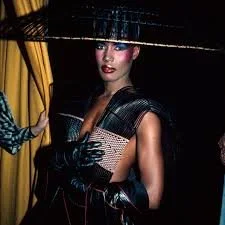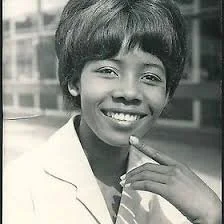When Caribbean Artists Became Mainstream
Des’ree
Nations are imaginary borders accorded meaning and legitimacy by the collective. They are mental constructs utilized to divide and conquer, subjugate, oppress, dominate and control. The idea of nationhood is the lense used to understand, categorise, validate or invalidate the other. The thin line between regard and disregard is the imaginary nation one emanates from. As for me, I am a citizen of this beautiful earth and nothing can ever distract me from enjoying myself and the music emerging from her nooks and crannies.
Keeping in line with the spirit of nationhood which began with the Scandinavian nations in the last post, the Caribbean nations become the focus in the now. The islands were discovered in the 1500s and before the scramble for Africa during the late 19th century, the scramble for the Caribbeans took precedence with the Dutch, British and Spanish squabbling for ownership.
Situated in nature’s hub, the caribbean is generously endowed with paradisiacal and picturesque landscapes, flora and fauna, waters, mountains, forests, spiciness, abundant creativity, attitude, organic living and irresistible music. Just like the Scandinavians, where Sweden takes preeminence in music creativity, Jamaica polarizes the islands and functions in a similar role. Consequently, island music is predominantly created in Jamaica. And the musicians who sojourn outside the island borders, also incorporate their new experiences into their music creation.
Gabrielle
Patra
In her Memoir, I’ll Never Write My Memoirs, Grace Jones describes the magnetism of Jamaica specifically and the Islands, generally, when she notes that: “Jamaica has this powerful life force, and it can take hold of you, like its reggae does. Sometimes people don’t want to leave the island; sometimes it’s like the island doesn’t want you to leave. You can get trapped, and you can’t leave, and you don’t know why. And you are not too worried about it, actually, but it’s not what you expected” (195).
She acknowledges Jamaica’s pivotal role in the creation of popular music that embodies her identity and notes that “After America and Britain, no other country has managed to do that with such distinctive style. To invent a popular music that could only come from one place that has traveled worldwide and that constantly changes. Such a tiny island has done this” (198).
Grace Jones
Grace Jones writes this memoir in 2015 at the point when Nigeria’s Afrobeats, a variation of Fela’s Afrobeat was unfolding and diffusing across the world. Had she known, Nigeria’s name ought to have been on that list. But I digress!
Millicent Dolly May Small, a.k.a Millie Small is credited for opening up the pathway to Caribbean music’s exposure to the world through her interpretation of Barbie Gaye’s “My Boy Lollipop” in 1964. This was over a decade before Bob Marley’s “No Woman, No Cry”.
Millie Small
With the intervention of Chris Blackwell of Island Records, ska/reggae music and indeed music and artists from the caribbean Islands would find visibility on the global stage. His little known label which would gain limelight after Small’s entry on the roster also housed Marley and the Wailers, Jimmy Cliff, U2, Harry Belafonte, Etta James, etc. In later years, it would become the home of Grace Jones, Black Uhuru, Salif Keita, Angelique Kidjo, Beenie Man, Chaka Demus, Janet Jackson, JLo, Macy Gray, etc.
In this post, I share some of the music jewels from the Caribbean, produced within and without the imaginary borders.
Beenie Man (Jamaica). “Tear Off Mi Garment” https://www.youtube.com/watch?v=vbJ2_gJdNOM Blessed (1995).
Billy Ocean (Grenada). “Caribbean Queen (No More Love On The Run)” https://www.youtube.com/watch?v=VOiZC020nl0 Suddenly (1984).
Bob Marley (Jamaica). “Natural Mystic” https://www.youtube.com/watch?v=UZfaIx57UqU Exodus (1977).
Buju Banton (Jamaica). “54/46” https://www.youtube.com/watch?v=RlGWBYiEaDM Inna Heights (1997).
Caron Wheeler (Jamaica). “Keep On Movin’” https://www.youtube.com/watch?v=dGAaPdJ_mcI Club Classics Vol. One (1989).
Chaka Demus & Pliers (Jamaica). “Bam Bam” https://www.youtube.com/watch?v=c8P1R6xZtDs Bam Bam It’s Murder (1992).
Des’ree (Guyana-Barbados). “You Gotta Be” https://www.youtube.com/watch?v=WRUwSk9UTrA I Ain’t Movin’ (1994).
Diana King (Jamaica). “Supa-Lova-Bwoy” https://www.youtube.com/watch?v=19AOcDcXHK4 Think Like A Girl (1997).
Eddy Grant (Guyana). “Electric Avenue” https://www.youtube.com/watch?v=-1QZLkPSz6s Killer On The Rampage (1982).
Gabrielle (Dominica). “Dreams Can Come True” https://www.youtube.com/watch?v=G5QPirQITZI Now Dance 93 (1993).
Grace Jones (Jamaica). “Feel Up” https://www.youtube.com/watch?v=2Rnv-ae9Czw Nightclubbing (1981).
Heavy D (Jamaica). “Now That We’ve Found Love” https://www.youtube.com/watch?v=UhRRIT1xms4 Peaceful Journey (1991).
Jimmy Cliff (Jamaica). “Reggae Night” https://www.youtube.com/watch?v=oPHWzTDJhSE The Power And The Glory (1983).
Maxi Priest (Jamaica). “Close To You” https://www.youtube.com/watch?v=EFPs-CPk7AA Bonafide (1992).
Millie Small (Jamaica). “My Boy Lollipop” (Non-Album Single, 1964).
Nicki Minaj (Trinidad). “Last Time I Saw You” https://www.youtube.com/watch?v=tjjADhzQKNM Pink Friday 2 (2023).
Patra (Jamaica). “Banana” https://www.youtube.com/watch?v=eqRsXFCjxkg Scent Of Attraction (1995).
Rihanna (Barbados). “Take A Bow” https://www.youtube.com/watch?v=J3UjJ4wKLkg Good Girl Gone Bad: Reloaded (2008).
Sean Paul (Jamaica). “Baby Boy” https://www.youtube.com/watch?v=z-lXCJPy_Kc Dutty Rock (2002).
Shabba Ranks (Jamaica). “Ram Dancehall” https://www.youtube.com/watch?v=twsHGcJy2v0 A Mi Shabba (1995).
Shaggy (Jamaica). “Strength Of A Woman” https://www.youtube.com/watch?v=mILsx_c-vXw Lucky Day (2002).
Wyclef Jean (Haiti). “What Happened To Love” https://www.youtube.com/watch?v=wjuLf-m1hyU Carnival III (2017).
